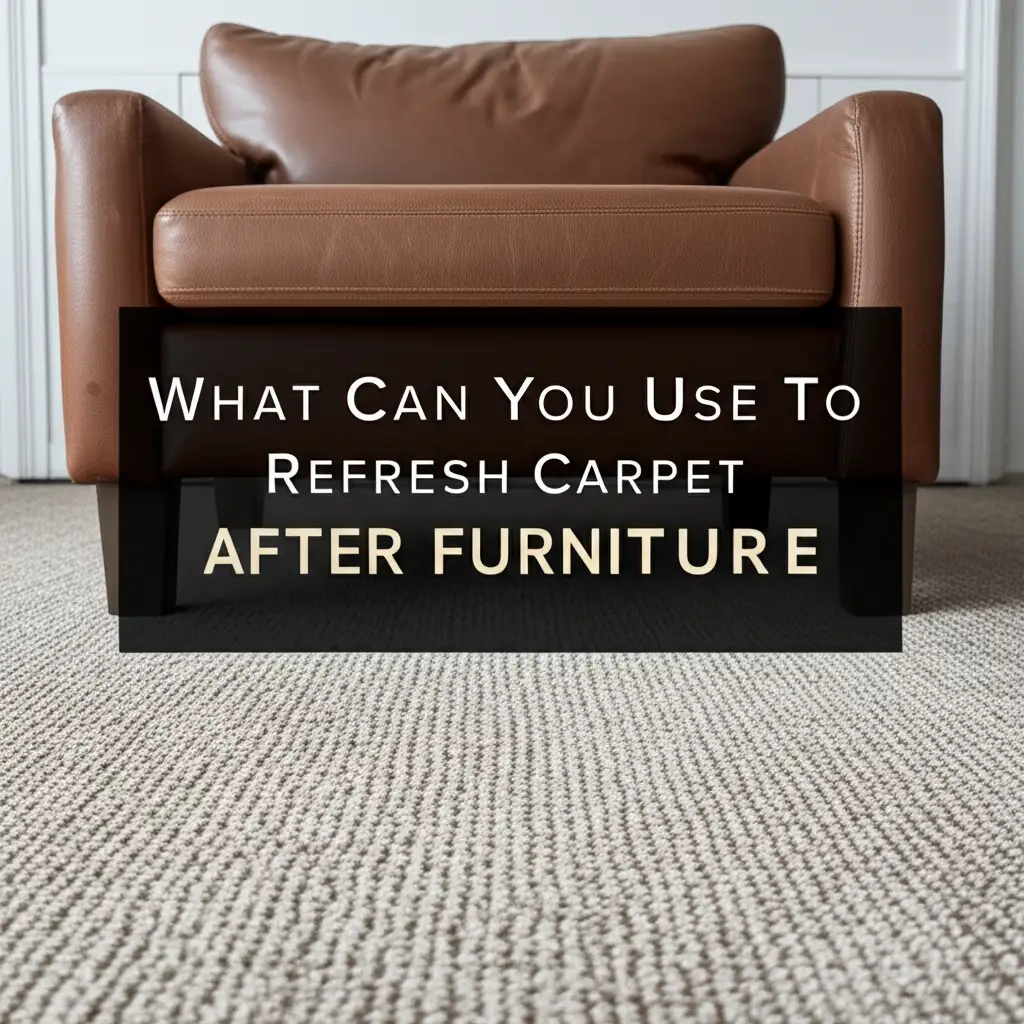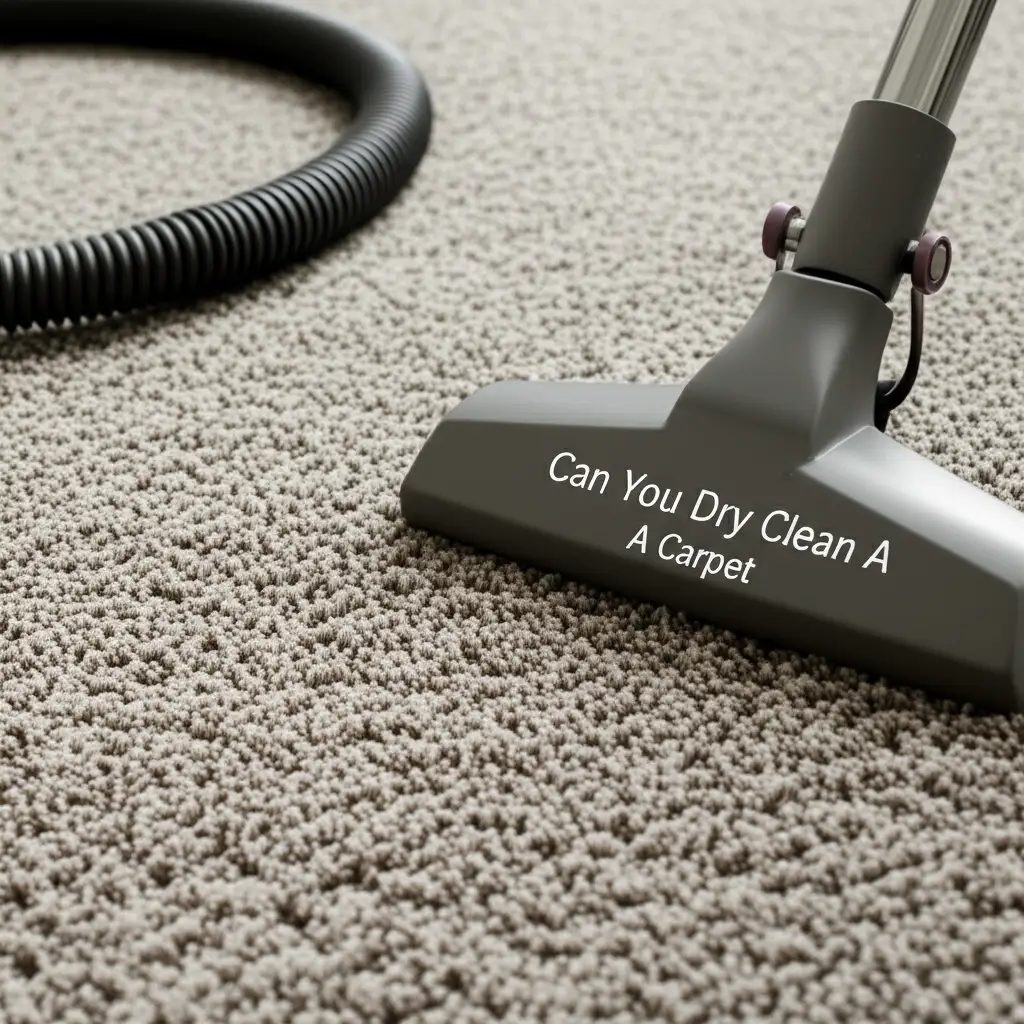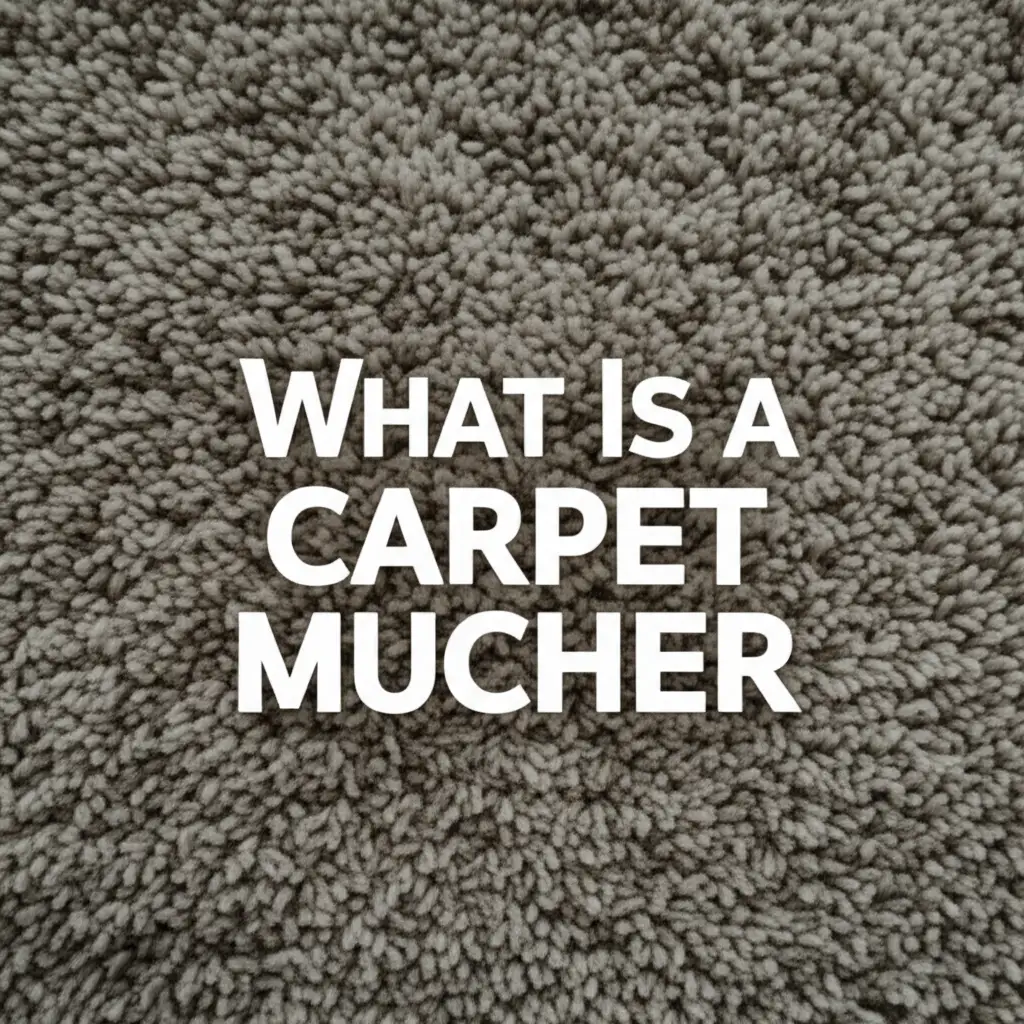· Tessa Winslow · Carpet Care · 17 min read
What Can You Use To Refresh Carpet After Furniture

Refresh Your Carpet After Furniture Moves
Moving furniture around your home often reveals an unwelcome sight: stubborn indentations on your carpet. These flattened areas detract from your floor’s appearance. They make your room look less inviting. Fortunately, you do not need to live with these tell-tale signs. Many simple and effective methods exist to refresh carpet after furniture has been relocated. We can bring your carpet back to its original plush state. This article will explore various techniques, from basic household items to more advanced solutions. You will learn how to restore your carpet’s pile, remove furniture marks, and keep your floors looking beautiful. We will cover a range of options, ensuring you find the perfect approach for your carpet type and specific needs.
Takeaway:
- Use ice cubes or a steam iron with a damp cloth to lift carpet pile.
- Brush and vacuum dents vigorously to restore fibers.
- Consider professional carpet cleaning for deep or widespread indentations.
- Implement preventative measures to protect your carpet from future marks.
Moving furniture often leaves behind noticeable indentations on your carpet. You can refresh carpet after furniture marks appear using simple methods. These include ice cubes, a steam iron with a damp cloth, or a warm towel to gently release the compressed fibers. After applying moisture and heat, brush the area with a stiff brush or spoon. Then, finish with a thorough vacuuming to restore the pile.
Understanding Carpet Indentations and Pile Compression
When heavy furniture sits on carpet for long periods, it creates indentations. This happens because the furniture’s weight compresses the carpet fibers. The pile flattens, and the backing might even compact. Different types of carpet react differently to this pressure. Thick, plush carpets often show deeper, more noticeable dents. Loop pile carpets, like Berber, can also suffer, sometimes showing permanent kinks in the loops. Understanding this compression helps us choose the right refreshing method. The goal is to lift these compressed fibers gently.
The duration the furniture sat in one spot also matters. Longer periods of compression mean more stubborn indentations. Heat and moisture help relax the fibers, allowing them to spring back up. Cold can also stiffen fibers, making them easier to manipulate. We use tools like ice cubes or steam to reintroduce moisture. This process helps the fibers regain their natural bounce.
Carpet material also plays a role. Wool carpets might respond differently than synthetic ones like nylon or polyester. Synthetic fibers often have a “memory” and can bounce back more easily. Wool, being a natural fiber, might need more gentle persuasion. Always test any method in an inconspicuous area first. This prevents accidental damage to your carpet. Proper care ensures your carpet lasts longer and looks better.
- Fiber Memory: Synthetic carpets like nylon often have a good “memory.” This means their fibers tend to return to their original shape easily.
- Natural Fibers: Wool carpets are natural. They may require gentler methods to avoid damage.
- Carpet Backing: Sometimes, the indentation goes deeper than just the fibers. It can affect the carpet’s backing. This requires persistent effort to lift.
Many people wonder if carpet cleaning companies move furniture. Often, they do. This service helps ensure a thorough clean underneath. It also allows you to address any furniture marks immediately.
Essential Tools and Materials for Carpet Refreshing
To refresh carpet after furniture removal, gathering the right tools is key. Most items you need are probably already in your home. These tools help you apply moisture, heat, and physical agitation to the carpet fibers. You will need a spray bottle for water. A clean white cloth or towel is also essential. This protects your carpet from direct heat or too much moisture. I also recommend a sturdy spoon or a stiff-bristled brush. These help fluff up the carpet pile once it softens.
For some methods, you will need ice cubes. These are great for a slow, controlled release of moisture. A steam iron or a garment steamer is another useful tool. These apply heat and moisture effectively. Make sure your iron has a steam setting. A regular vacuum cleaner with a strong suction and a beater bar is also crucial. It helps lift and separate the fibers. You might also want a carpet cleaner product. Look for one designed for spot treatment or general carpet refreshing. Products like Meguiar’s carpet cleaner can be helpful for specific stains or odors that accompany the indentations.
Always ensure your tools are clean before use. This prevents transferring dirt or stains to your carpet. Using a white cloth prevents color transfer from the cloth itself. Check your iron’s settings to ensure it is not too hot for your carpet type. Read your carpet’s care label if you have it. This label provides specific instructions for cleaning and maintenance. Preparing your tools makes the refreshing process much smoother.
- Basic Supplies:
- Spray bottle with water
- Clean white cloth or towel
- Sturdy spoon or stiff-bristled brush
- Heat & Moisture Tools:
- Ice cubes
- Steam iron (with steam setting)
- Garment steamer
- Cleaning Tools:
- Vacuum cleaner with strong suction
- Optional: Carpet spot cleaner or general carpet cleaner
Remember, proper preparation leads to better results. Having everything ready saves time and effort during the carpet refreshing process.
The Ice Cube Method: A Gentle Approach to Carpet Dents
The ice cube method is a popular and gentle way to refresh carpet after furniture marks. It works by slowly melting, releasing moisture into the compressed carpet fibers. This moisture helps the fibers swell and regain their original shape. The cold also helps the fibers to stiffen slightly, making them easier to lift. I have personally used this method many times. It is simple, effective, and requires minimal effort.
First, place one or two ice cubes directly into each indentation. You want enough ice to cover the flattened area. Avoid using too many, as excessive water can soak the carpet. Let the ice cubes melt completely. This process can take a few hours, depending on the room temperature. As the ice melts, the water slowly penetrates the carpet fibers. This rehydrates and relaxes them.
Once the ice has melted, the carpet will be damp. Do not let it stay soaking wet. Use a clean, dry cloth to blot up any excess water. Then, take a sturdy spoon or a stiff-bristled brush. Gently fluff up the carpet fibers. Work the spoon or brush against the natural lay of the pile. This helps lift the compressed fibers. Finish by vacuuming the area. The vacuum’s suction and beater bar will help pull the fibers upright. This method is especially effective for newer dents or less severe compressions. It is a safe option for most carpet types.
- Steps for Ice Cube Method:
- Place 1-2 ice cubes directly on each carpet dent.
- Allow ice to melt completely, usually several hours.
- Blot excess water with a clean, dry cloth.
- Gently fluff the damp fibers with a spoon or stiff brush.
- Vacuum the area thoroughly to lift and restore the pile.
This gentle approach minimizes the risk of damage. It is a fantastic first step before trying more intensive methods.
Using Heat and Moisture: The Iron and Damp Cloth Technique
The iron and damp cloth technique provides a more direct application of heat and moisture. This method is highly effective for refreshing carpet after furniture. The heat from the iron combined with the steam from the damp cloth works wonders. It relaxes the carpet fibers much faster than the ice cube method. This allows them to spring back to their original form. I find this technique particularly useful for deeper or more persistent dents.
To start, dampen a clean white cloth. Do not make it soaking wet, just thoroughly damp. Place this cloth over the carpet indentation. Set your iron to a medium heat setting. Ensure it has a steam function enabled. Do not let the iron touch the carpet directly. Hover the iron over the damp cloth for about 30 seconds to one minute. Move the iron slowly over the entire dented area. The steam will penetrate through the cloth into the carpet fibers. This process helps to decompress the flattened pile.
After steaming, lift the cloth. The carpet fibers should feel warm and slightly damp. Use your fingers, a spoon, or a stiff brush to gently fluff up the carpet. Work against the grain of the carpet pile. This encourages the fibers to stand upright. Once you have fluffed the area, let the carpet air dry completely. After it is dry, vacuum the spot vigorously. This final step helps to fully restore the pile and blend it with the surrounding carpet. Always use a white cloth to prevent dye transfer onto your carpet. Exercise caution not to overheat the carpet, especially if it is synthetic, as melting can occur.
- Steps for Iron and Damp Cloth:
- Dampen a clean white cloth.
- Place the damp cloth over the carpet dent.
- Set a steam iron to medium heat.
- Hover the iron over the damp cloth for 30-60 seconds, allowing steam to penetrate.
- Remove the cloth and fluff the carpet fibers with a spoon or stiff brush.
- Let the carpet dry completely, then vacuum.
This method requires a bit more attention. However, it delivers impressive results for stubborn furniture marks. For different carpet types, like wool, consider if can I use a dry machine for a wool carpet is something you’ve considered for overall care. Knowing your carpet’s material helps ensure safe treatment.
Brushing and Vacuuming Techniques for Pile Restoration
Brushing and vacuuming are crucial steps in refreshing carpet after furniture has been moved. These actions help to physically lift and separate compressed carpet fibers. You cannot just rely on moisture and heat alone. Once the carpet fibers are softened, mechanical action is needed to encourage them to stand upright. I always make sure to include these steps for the best results.
Start with brushing. Use a stiff-bristled brush, a fork, or even the edge of a sturdy spoon. Work the tool against the natural direction of the carpet pile. Imagine trying to comb hair in the opposite direction it naturally lies. This action helps to dislodge the flattened fibers. Brush the area vigorously but not harshly. You want to agitate the fibers without damaging them. For particularly stubborn dents, you might need to repeat the moisture/heat application before brushing.
After brushing, vacuum the area thoroughly. A powerful vacuum cleaner with a beater bar is ideal for this step. The rotating brush of the beater bar helps to further lift and separate the carpet fibers. Vacuum over the dented spot multiple times, moving in different directions. This ensures maximum agitation and pile restoration. The suction also pulls any remaining moisture and dirt from the carpet. This leaves it looking fresh and upright. Regular vacuuming is also key to keeping a carpet down and maintaining its overall appearance.
- Effective Brushing:
- Use a stiff-bristled brush, spoon, or fork.
- Brush against the carpet’s natural pile direction.
- Be vigorous but gentle to avoid damage.
- Thorough Vacuuming:
- Use a vacuum with strong suction and a beater bar.
- Vacuum the area multiple times from different angles.
- This lifts fibers and removes any loosened debris.
Combining moisture/heat with proper brushing and vacuuming creates a powerful approach. This process gives your carpet the best chance to recover from furniture indentations.
Spot Cleaning and Deodorizing for a Full Refresh
Beyond just lifting dents, a full carpet refresh often involves spot cleaning and deodorizing. Furniture, especially older pieces, can leave not just indentations but also dust, grime, and stale odors. Addressing these issues helps restore your carpet’s overall freshness. I always recommend this step to complete the refreshing process.
First, identify any visible dirt or stains within the indentations or surrounding areas. For general dirt, a simple carpet spot cleaner works well. Apply a small amount of cleaner to a clean cloth, then gently blot the soiled area. Do not scrub, as this can push dirt deeper into the fibers. Work from the outside of the stain inwards. This prevents the stain from spreading. Repeat blotting with a clean, damp cloth to rinse the area. You can find specialized products like Karcher professional carpet cleaner that offer deep cleaning capabilities for various stains and odors.
For odors, baking soda is a fantastic natural deodorizer. Sprinkle a generous amount of baking soda over the refreshed carpet area. Let it sit for at least 15-30 minutes, or even a few hours for strong odors. The baking soda absorbs unpleasant smells. After it has absorbed the odors, vacuum it up thoroughly. This leaves your carpet smelling fresh and clean. If you have pets, this step is particularly important. It removes any lingering pet odors that might have been trapped under the furniture.
- Spot Cleaning Steps:
- Identify and address any visible dirt or stains.
- Apply carpet spot cleaner to a clean cloth.
- Blot the soiled area gently, working from outside-in.
- Rinse by blotting with a clean, damp cloth.
- Deodorizing Steps:
- Sprinkle baking soda generously over the area.
- Let it sit for 15-30 minutes (or longer for strong odors).
- Vacuum up the baking soda completely.
This combined approach ensures your carpet not only looks restored but also smells clean and inviting.
When to Call Professionals: Stubborn Marks and Large Areas
While DIY methods are great for refreshing carpet after furniture, sometimes the damage is too significant. Stubborn, deep marks or large areas of compression might require professional intervention. Knowing when to call in the experts can save you time and prevent further damage. I consider professional help a valuable investment for maintaining my home’s carpets.
Professional carpet cleaners have powerful equipment. They use hot water extraction (steam cleaning) machines that apply high-pressure water and cleaning solutions. These machines can reach deep into the carpet pile and backing. This effectively lifts out deep compressions and extracts embedded dirt. They also have specialized tools and techniques for specific carpet types and severe indentations. A professional can assess the carpet’s condition and recommend the most effective treatment. They can also advise on permanent damage versus repairable marks.
Consider professional cleaning if:
- Dents are very deep and long-standing: Years of heavy furniture can create almost permanent indentations. DIY methods might not have enough power to lift these.
- Large areas are affected: If you moved a whole room of furniture, you might have many dents. Doing them all by hand is very time-consuming.
- Carpet is old or delicate: Older carpets or specialized materials might be prone to damage with DIY methods. Professionals know how to handle these carefully.
- You notice discoloration or mold: Sometimes, moisture can get trapped under furniture, leading to mold or mildew. Professionals can address these health concerns.
Asking for professional help ensures the job is done right. It can extend the life of your carpet. They often provide more thorough cleaning benefits too. For example, what proportions for an area rug in a furniture grouping is a question you might consider after a professional cleaning to prevent future marks by strategically placing rugs.
- Benefits of Professional Cleaning:
- Powerful Equipment: Hot water extraction machines lift deep compressions.
- Expert Knowledge: Professionals know how to handle different carpet types and severe damage.
- Time-Saving: They can refresh large areas quickly and efficiently.
- Comprehensive Care: They address deeper dirt, mold, or persistent odors.
Do not hesitate to consult a professional for difficult carpet issues. It is often the best solution for long-term carpet health.
Preventative Measures for Future Carpet Protection
After learning how to refresh carpet after furniture, you should also think about prevention. Protecting your carpet from future indentations is easier than fixing them. A few simple steps can save you a lot of effort in the long run. I always try to implement these measures to keep my carpets looking pristine.
Firstly, use furniture glides or cups under heavy furniture legs. These distribute the weight more evenly over a larger surface area. This reduces the pressure on individual carpet fibers. You can find these at hardware stores or online. They come in various sizes and materials, including felt or rubber. Felt glides also make it easier to move furniture without scratching floors.
Secondly, try to rotate your furniture periodically. Even shifting a heavy piece a few inches every few months can prevent deep, permanent dents. This redistributes the weight and allows compressed fibers to naturally recover. If rotating is not possible, try lifting the furniture and fluffing the carpet underneath. A quick vacuum in the area can also help.
Thirdly, consider placing area rugs under heavy furniture groupings. Rugs not only protect your carpet but also add to your room’s décor. They provide an extra layer of protection against direct pressure. This is especially useful in high-traffic areas or under very heavy items like beds and sofas. Remember to clean and rotate these rugs too. This ensures even wear and prevents dirt buildup.
- Key Preventative Actions:
- Furniture Glides/Cups: Place under legs to distribute weight.
- Rotate Furniture: Shift heavy pieces every few months to allow fiber recovery.
- Lift and Fluff: Periodically lift furniture to vacuum and fluff carpet underneath.
- Area Rugs: Use under heavy items for added protection and decor.
These simple preventative measures can significantly reduce the occurrence of deep carpet indentations. They help keep your carpet looking fresh and extend its lifespan.
FAQ Section
Q1: How long do carpet dents typically last if untreated? A1: Carpet dents can last for weeks, months, or even years if left untreated. The duration depends on the carpet type, the weight of the furniture, and how long it sat in one spot. Newer dents respond much faster to treatment than old, deeply set ones. Regular foot traffic can help, but active methods are more effective.
Q2: Can heavy furniture permanently damage carpet? A2: Yes, heavy furniture can cause permanent damage, especially if left for many years. While most dents are reversible, extreme compression can break carpet fibers or damage the carpet backing. This can lead to irreversible flattening or even small tears. Prevention is always the best approach.
Q3: Is it safe to use ice on all carpet types? A3: The ice cube method is generally safe for most carpet types, including wool and synthetic fibers. It provides a slow, controlled release of moisture, which is gentle. However, always blot excess water quickly to avoid oversaturating the carpet, especially on natural fibers which can be more sensitive to moisture.
Q4: When should I consider professional carpet cleaning for furniture marks? A4: You should consider professional carpet cleaning for furniture marks if the dents are very deep, extensive, or have been present for a long time. Professionals have specialized equipment and techniques that can often restore even stubborn indentations. They can also address any underlying dirt or odors.
Q5: What are the best immediate steps after moving furniture to prevent marks? A5: Immediately after moving furniture, vacuum the affected area vigorously from multiple directions. Then, use a stiff brush or your fingers to fluff up the carpet fibers. If dents are present, apply a quick refresh method like the ice cube technique or a damp cloth with an iron. This helps fibers recover quickly.
Q6: Can steaming my carpet damage it? A6: Steaming carpet with a damp cloth and iron is generally safe if done correctly. Do not let the iron directly touch the carpet. Use a medium heat setting and keep the iron moving. Excessive heat or direct contact can melt synthetic fibers or scorch natural ones. Always test a small, hidden area first.
Conclusion: Reclaiming Your Carpet’s Beauty
Moving furniture always brings the challenge of flattened carpet. Yet, you now know many ways to refresh carpet after furniture has left its mark. From the gentle ice cube method to the powerful steam of an iron and damp cloth, effective solutions are available. We have explored how proper brushing and vacuuming can restore your carpet’s natural pile. We also covered essential spot cleaning and deodorizing techniques. These steps ensure your carpet not only looks good but smells fresh too.
Remember, prevention is always key. Using furniture glides and periodically rotating your furniture can save you effort in the future. For very stubborn marks or large affected areas, calling a professional carpet cleaner might be the best decision. Their equipment and expertise can work wonders. By applying these methods, you can keep your home looking its best. Your carpets will maintain their soft, plush appearance for years to come. Do not let old furniture marks diminish your home’s appeal. Take action and restore your carpet’s beauty today.





